American Artscape Notable Quotable: Manuel Delgado
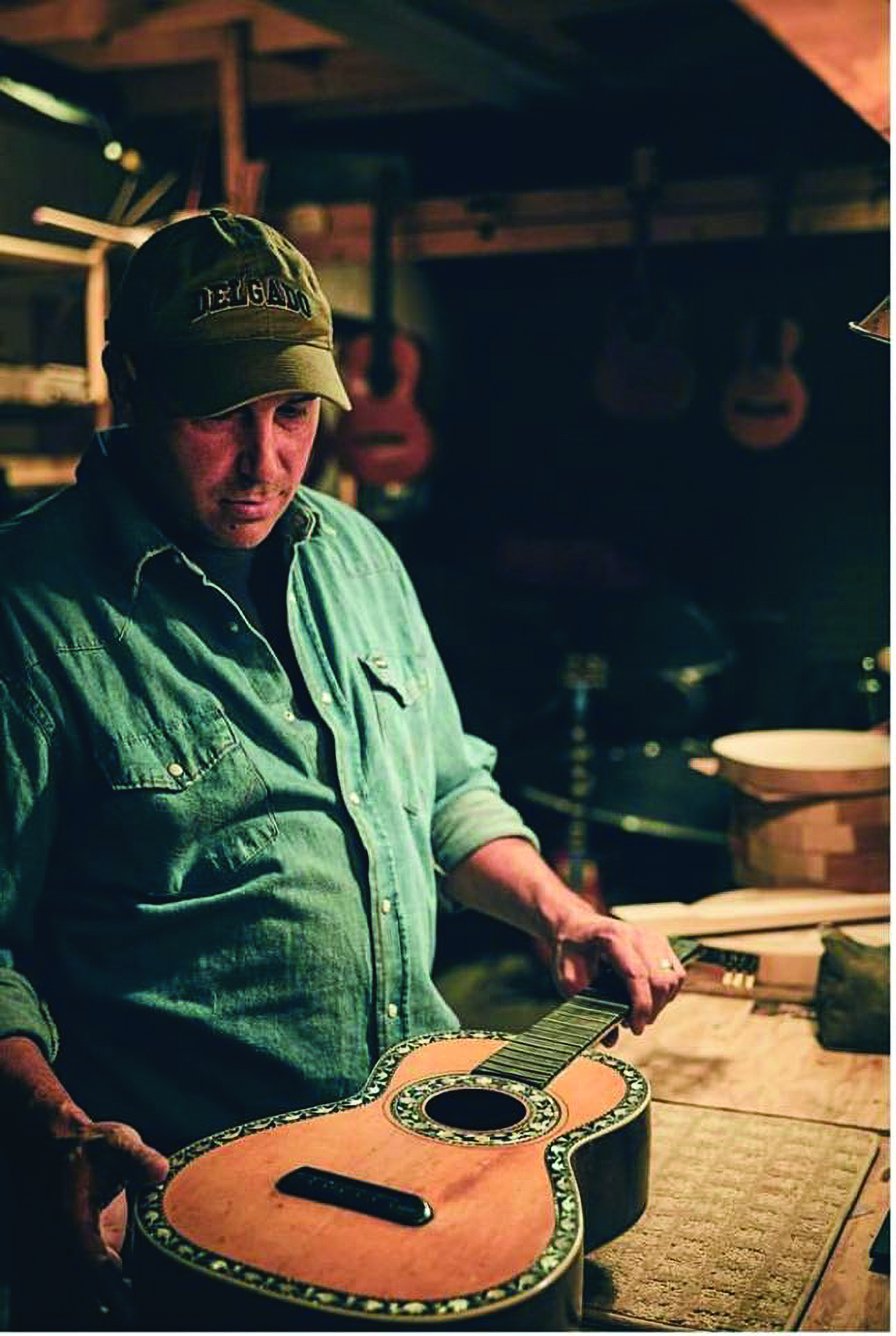
Luthier Manuel Delgado with one of his guitars. Photo courtesy of Delgado Guitars

Luthier Manuel Delgado with one of his guitars. Photo courtesy of Delgado Guitars
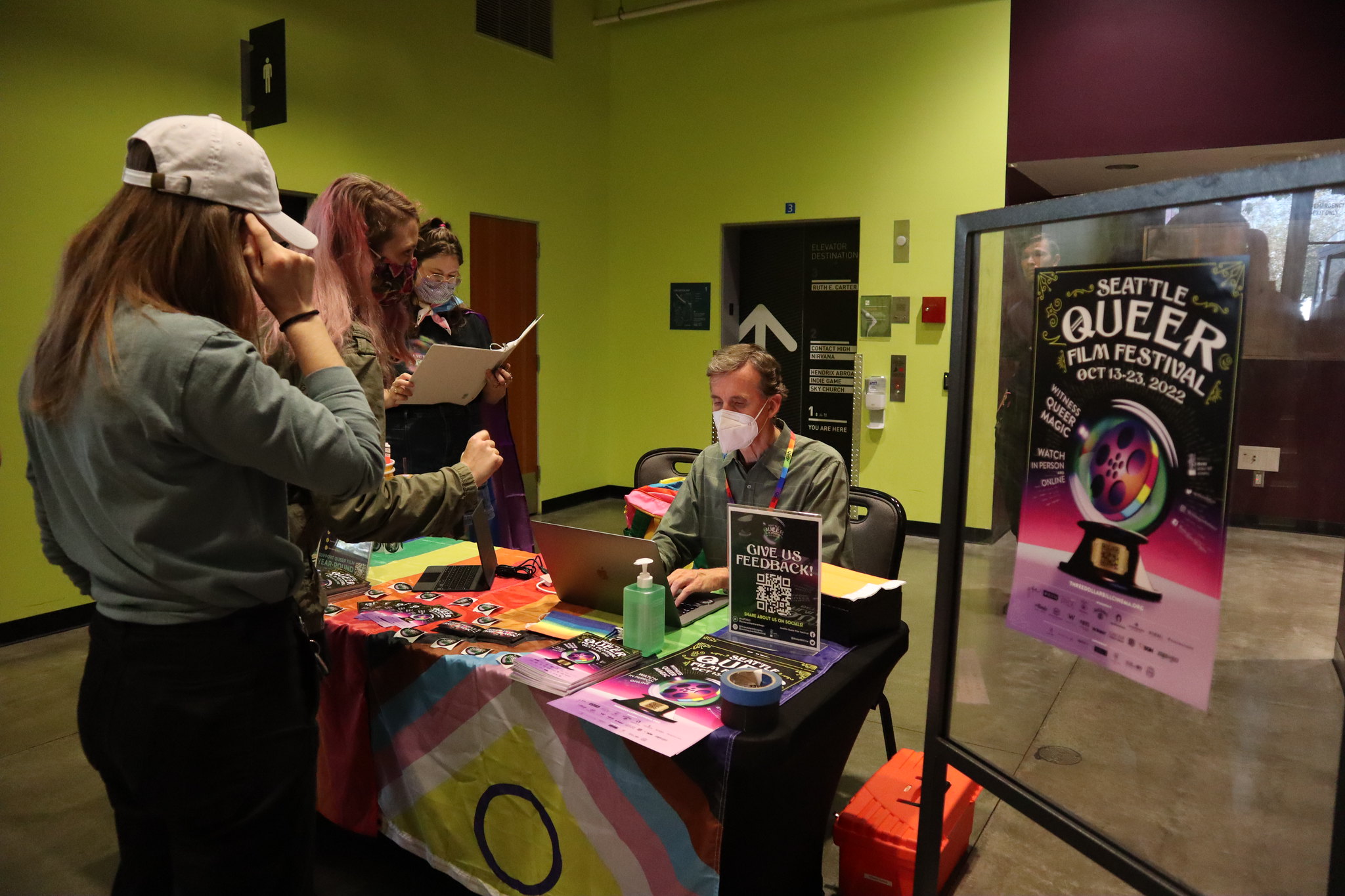
Seattle Queer Film Festival expanded its offerings this year to include 150 film showings from 27 countries. Courtesy of Three Dollar Bill Cinema
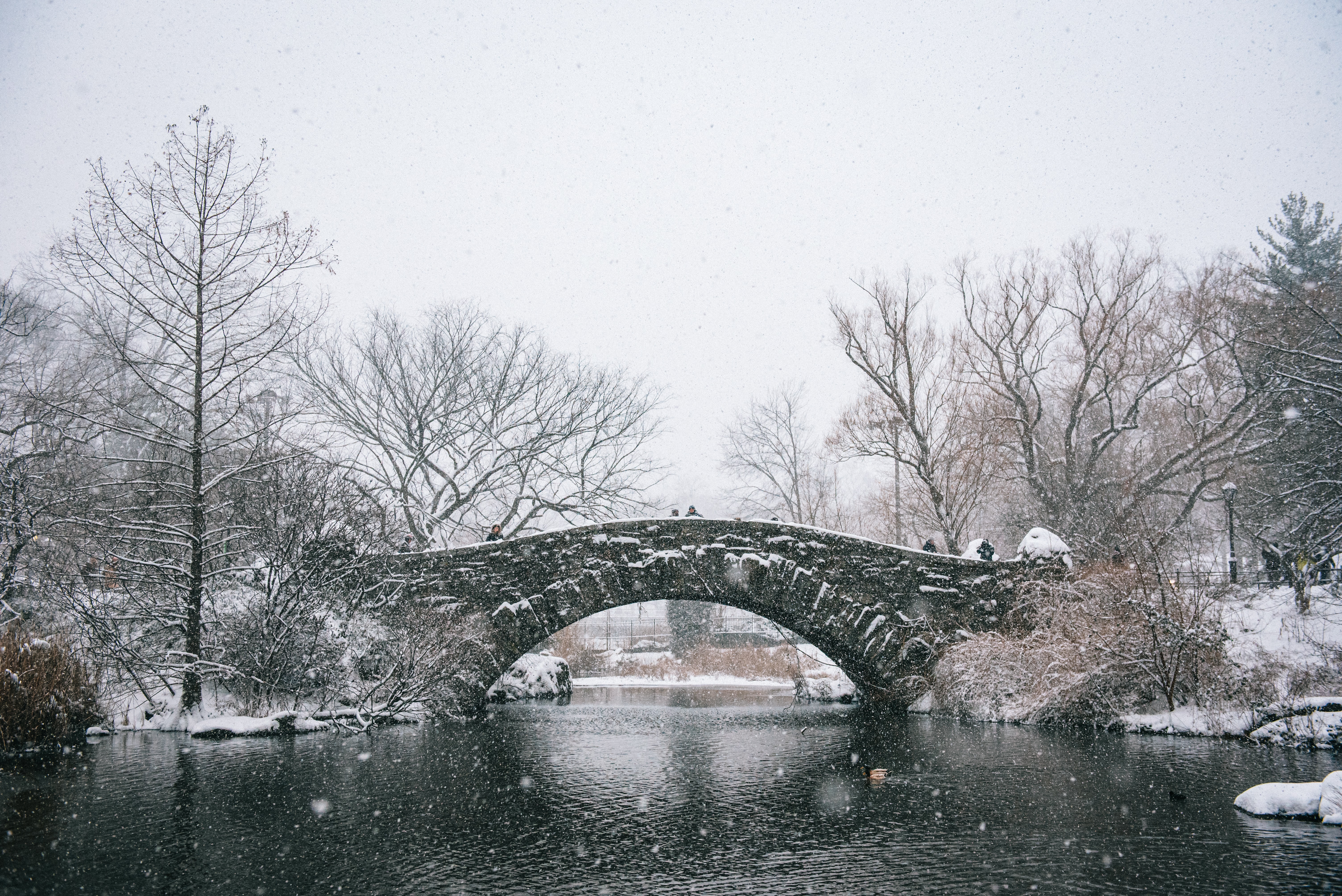
Photo by Fabio Fistarol via Unsplash
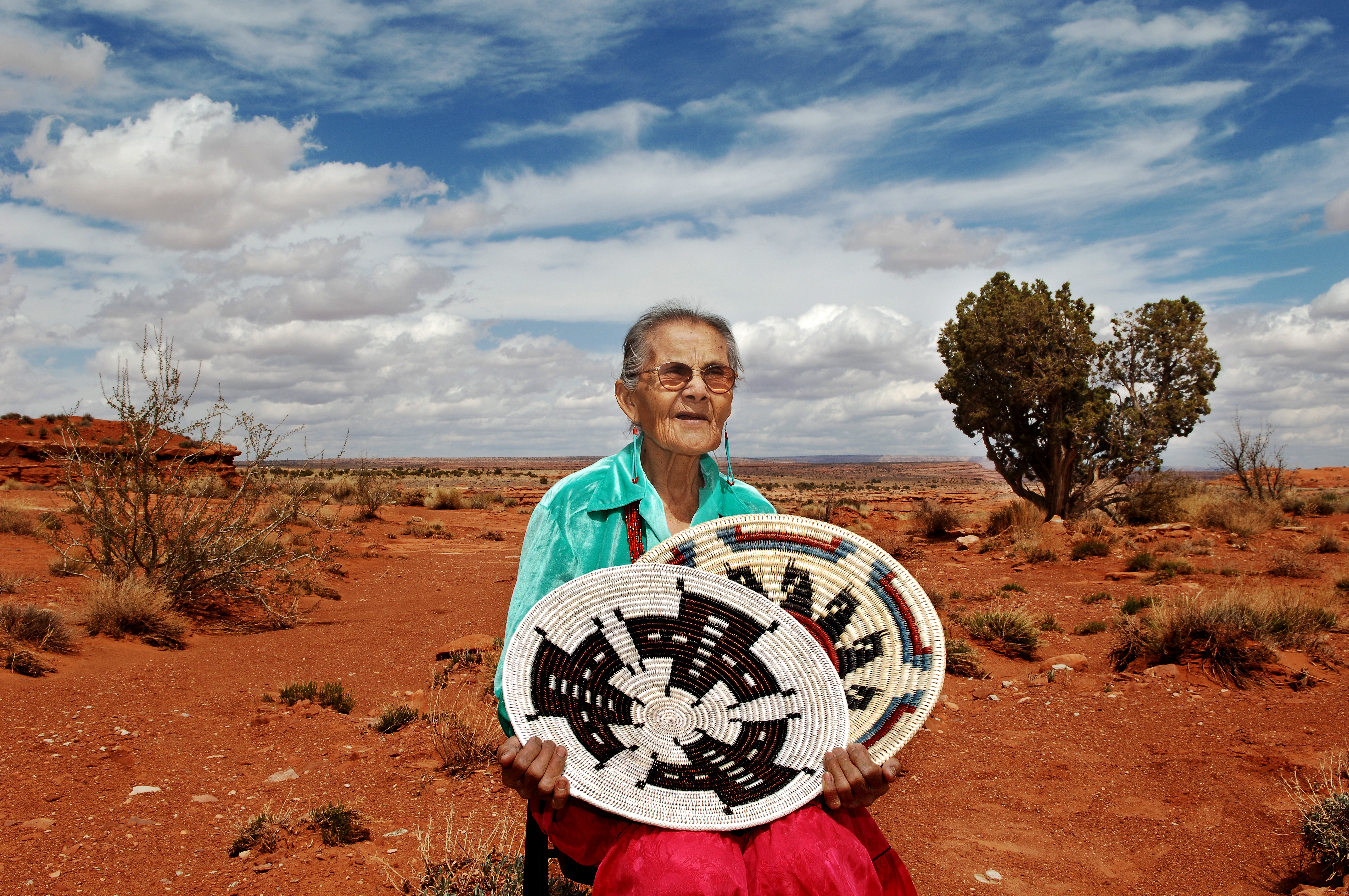
1995 NEA National Heritage Fellow Mary Holiday Black. Portrait by Tom Pich
Transcript
Music Credits:
"New York, New York,” Some Other Time" composed by Leonard Bernstein from the New Broadway Cast recording of On the Town, courtesy of PS Classics, 2015.
"Prologue”, “Dance at the Gym,” “Somewhere" composed by Leonard Bernstein from the Original Cast recording of West Side Story. Courtesy of Masterworks Broadway, 1998.
"Overture from Candide" composed by Leonard Bernstein from the New Broadway Cast recording of Candide, courtesy of Masterworks Broadway, 1997.
Jo Reed: From the National Endowment for the Arts, This is Art Works I’m Josephine Reed…. As I said last week, we’re winding up our podcasts for the year, and I’m posting interviews that center on art that brings me joy…and that I hope will bring joy to you.
Music up*
Jo Reed: That is the overture to Candide written by the great Leonard Bernstein and this week, we’re going back to 2018 the centenary of Leonard Bernstein’s birth with a podcast that explores his work on Broadway. This podcast is filled with music and was pure joy to put together. I hope you enjoy it as well.
Leonard Bernstein may only have written a handful of Broadway musicals, but he was a game-changer. From On the Town to West Side Story, Bernstein created a sound that was distinctly his and distinctly American. But how did he do that? With me to get at the heart of Bernstein’s musical genius is composer, conductor, and commentator Rob Kapilow. You might know Rob from his public radio program, What Makes It Great—where he takes listeners inside of music to answer that very question. Bernstein has long been an influence on Kapilow, and Rob has given a number of presentations about Leonard Bernstein’s music. It turns out, the aura of Leonard Bernstein has always been a part of Rob’s life.
Robert Kapilow: Well, for me Bernstein was literally my mother’s hero. There was not a single room in our house that did not have a photograph of Leonard Bernstein in it and my mother had a subscription to every concert at the New York Philharmonic he conducted. Any time he was in New York she went there. He was, literally, he was the hero of our household. When I was a child myself I went to Young People’s Concerts. So for me my interest in Bernstein started from the very beginning--and for me he is a constant source of inspiration.
Jo Reed: Rob, before we talk specifically about Bernstein’s work on Broadway, just give us a little thumbnail sketch about his background.
Robert Kapilow: Bernstein wasn’t just sort of a factor in American music; for a while there he defined American music. Born in 1918 in Massachusetts, went to the Boston Latin School, went to Harvard, graduated from the Curtis Institute with an A in conducting. At the beginning of 1943, he was relatively unknown, an assistant conductor for the New York Philharmonic until one of those magical debut moments, November 14th, 1943. All of a sudden Bruno Walter is ailing at Carnegie Hall, Bernstein steps in, no one has ever heard of him, massive standing ovation. He becomes a tabloid sensation overnight and his career is launched, one of those fantastic, great beginning moments.
Jo Reed: Well his star continued to rise. If 1943 was a big year for him, 1944 was extraordinary.
Robert Kapilow: So November 14th, 1943, he makes this amazing debut as a conductor but 1944 was an even more amazing debut year as a composer with three major world premieres and not only three major world premieres but three premieres as diverse as any composer in history. I mean he starts off with this serious classical symphony, Jeremiah, in January, then he writes this amazing ballet, Fancy Free with Jerome Robbins, which somehow takes the world of classical music, popular music, merges them together and puts it on the stage at the Metropolitan Opera, and then if that isn’t enough for a single year, writes his first musical in December, On the Town. I mean that still reigns in my mind as the most amazing debut of any composer. I mean who has ever written a serious liturgical symphony based on Jewish themes, an incredible ballet and a hit Broadway show in one year before they were 30 years old? An amazing debut.
Jo Reed: It is an amazing debut and, you know, even today there’s a gulf between classical music and what disdainfully would be called popular music, music for the stage. In 1943, that gap was even wider and deeper--
Robert Kapilow: It was.
Jo Reed: --and so for him at that young age, he was 25, to cross over--so to speak--was quite daring.
Robert Kapilow: There’s a famous quote from Duke Ellington who says, “There’s only two kinds of music, good music and the other kind,” and I think one of Bernstein’s greatest gifts, which still remains there today as a legacy, is this belief that the divisions that we make between kinds of music are arbitrary. Bernstein spoke all languages of music equally fluent. He was a native speaker in jazz, he was a native speaker in popular music and classical music, and though for him to go from a Mahler symphony one day to conduct on a Broadway show was nothing, at the time it was literally inconceivable. There had never been anything like it. And the truth is, though now he’s revered as an icon he suffered a lot during his career from that. Many critics couldn’t take him seriously; they just didn’t believe that someone who wrote a hit Broadway show and who could play jazz could possibly be a fantastic conductor of Mahler, Bach and Beethoven.
Jo Reed: Right. They would refer to Bernstein and his serious music as opposed to what he did on Broadway--
Robert Kapilow: Right
Jo Reed: And Bernstein actually conducted on the opening night of Fancy Free. He not only wrote it but he was in the pit.
Robert Kapilow: He did and it was one of the most amazing ovations ever. I’m told that they had something like 20 curtain calls for it—
Jo Reed: Twenty-two.
Robert Kapilow: --twenty-two curtain calls—and not only that; they extended the run. And for Bernstein who didn’t have that much money at that time it was a fantastic financial windfall to get to conduct all these extra performances, but yeah, I mean this was thrown together and it was an enormous ovation, people had never seen anything like it on the stage of the Metropolitan Opera
Jo Reed: The choreographer was Jerome Robbins and the brilliant sets were Oliver Smith and there was Bernstein; all of them are 25 years old.
Robert Kapilow: Right, incredible.
Jo Reed: They’re very young. They’re taking the city by storm. Tell me what was so new about what people saw and heard that night.
Robert Kapilow: Yeah. Well, one of the things I think that was amazing was just the moment that the curtain went up. Now you have to remember this is the stage of the Metropolitan Opera. People are used to a curtain going up and they’re seeing La Traviata settings or they’re seeing Aida and Egyptian monuments and that kind of thing. When the curtain came up what they saw was supposed to be a scene from outside the door, as if literally they could have just walked into that scene the moment they walked out the Metropolitan Opera. There was a bar; it was just a normal scene from normal life; it was every day. In fact, the stage direction said that they were supposed to be dressed in street clothes and not only that; the music they were hearing was a blues that he had written called the “Big Stuff” played on a jukebox. Now remember jukeboxes were all the rage in the ‘40s; I mean there were something like-- I don’t even know what the statistics-- there were millions of jukeboxes. It was sort of a major factor in people’s lives; that’s how they heard music. So instead of hearing an opera overture with an orchestra in the pit and these unbelievable old-fashioned settings on the stage they saw a setting that looked like something they could have walked into off the street right outside the theater and they heard jazz, “Big Stuff,” on a jukebox.
*Music up*
Jo Reed: Fancy Free is about three sailors on leave in New York City, and so is his Broadway debut On the Town. But Bernstein wrote an entirely different score for On the Town.
Robert Kapilow: In fact, Bernstein went to great pains to say there was absolutely not a single note,. Though he took the idea of the three sailors on a shore leave as the basic plot element he did not take a single note from Fancy Free in On the Town, just the idea.
Jo Reed: And what an opening, On the Town, that sleepy workman unhappy to be up at 6 a.m. and then “bam.”
*Excerpt from On the Town*
Robert Kapilow: Yea, beginnings are everything and it is such an extraordinary beginning and Bernstein was very aware as a conductor of the importance of beginning. You know, one other thing, let me just say about that plot: though the plots are similar, they’re both about three sailors on a shore leave, the emphasis is actually quite subtly different. Carol Oja wrote a wonderful book about Fancy Free and On the Town and Bernstein. And what she points out is that the emphasis in Fancy Free is much more on the men and their relationship to each other, and the women, though wonderful roles, are far more subsidiary. Whereas in On the Town the women are leading the action; the women are fully fleshed-out characters, and the gender equality is much different than On the Town.
Jo Reed: I want to talk about the music for On the Town and here’s the thing that I’d like you to explain to me. When I listen to the beginning of “New York, New York” and I know I am listening to something that is absolutely American, how do I know that?
Robert Kapilow: One of the things I think that’s amazing about Bernstein and it’s not surprising if you understand his background is that he was a musical sponge. He listened to every kind of music. When he was a kid he would put on productions of Gilbert and Sullivan; he would hang out at jazz clubs in New York. He was the kind of guy who whenever there was a party you could not get him away from the piano until four in the morning. He heard every kind of music and he absorbed every kind of music and so when he came to the world of the Broadway musical in a way he was freed up; he sort of felt he could pick and choose from the entire repertoire of Americana music. And in a way that entire melting pot idea that we say is at the heart of America, is really also at the heart of Bernstein’s style. He was his own unique melting pot. For example, take a song from On the Town like “I Can Cook Too.”
Robert Kapilow: I mean that is boogie-woogie baseline.
*Music up*
Robert Kapilow: I mean this is a conductor of the New York Philharmonic writing boogie-woogie baselines, big-band chords on top
*Music up*
Robert Kapilow: So in a way it was sort of like he had freed himself from the white tie and tails world of the Philharmonic and he’s saying, “I can cook too. I can do this just like everybody else” and there is this wonderful sense of freedom like he could pull from the entire repertoire of vernacular American music and put it all together. You know, even “New York, New York,” as wonderful a pop tune as it is, is immediately treated as a complex canon for all of the sailors so for Bernstein this ability to speak all of America’s musical languages with equal facility, to be a native speaker in all of those languages gave him this enormous repertoire to choose from and it’s all there. There’s what George Abbott called his “Prokofiev stuff”, the fancy, complicated music, but there’s also boogie-woogie baselines, simple ballads, complicated canons, and somehow Bernstein’s personality was able to mix them all and come up with a voice that sounded like his own.
Jo Reed: Yeah. In that play particularly he seemed to be channeling the energy of the city in that music and Jerome Robbins said about his rhythms, he said that they had to be demonstrated by dance.
Robert Kapilow: Absolutely. I mean that’s-- rhythm is something that though you can write it in music you feel it in your body. It’s really almost impossible to listen to that music and not move. And the dance flowed effortlessly out of itself. Not only were they joint creators of the entire show but literally almost every measure of the music has a dance equivalent to it.
Jo Reed: Yeah, and both Robbins and Bernstein wanted the chorus to look like New York City, which meant it was integrated with black dancers partnering white dancers, which also had not been done before.
Robert Kapilow: Absolutely, and also another thing that made part of the energy of that show: You said it was the energy of New York City but it was also the energy of the kind of present-tense, seize-the-day moment that it was in the middle of wartime. Now remember, these sailors were on leave for 24 hours and though the show’s focused on what happens during those 24 hours where they were going to go after those 24 hours was off to war, and so there was this tremendous sense of “I’m here. I have to grab everything that I can in the 24 hours’ shore leave that I have because next I’m going off to war.” So there’s not only the intensity of the city, the incredible intensity of that moment but there is that intensity of just this brief moment of time, and in fact one of the most poignant moments of the show. Though the show is filled with essentially upbeat, happy, joyous, rhythmic music there’s one profound moment in the show at the end, this song called—
Jo Reed: “Some Other Time.”
Robert Kapilow: Yeah, exactly.
Jo Reed: Oh, I was listening to that before. I love that song; that song is so beautiful.
Robert Kapilow: --this wonderful moment near the end of the show where they take in for a moment where they are and what’s going to happen next with this incredibly beautiful music and these incredibly powerful words and they sing,
*Music up*
Robert Kapilow: “Where has the time all gone to? Haven’t done half the things we want to” and then just <plays notes> “Oh, well, we’ll catch up some other time. This day was just a token. Too many words are still unspoken. Oh, well, we’ll catch up some other time.” I mean it’s such a beautiful thought.
*Excerpt from “Some Other Time” plays*
Jo Reed: Oh, that song is so beautiful. And a shout-out to Betty Comden and Adolph Green.
Robert Kapilow: Yes, for writing beautiful lyrics. No. I mean but it’s so heartfelt in a way because it’s been absent, because the show has just like those sailors pretended that the whole world is circumscribed in those 24 hours when we really take this in, and all of a sudden that music comes from such a different place of anything else in the show and the words are so heartfelt, “Where has the time all gone to?”-- I mean for all of us even today-- “We’ll catch up some other time,” a truly exquisite moment.
Jo Reed: He took time away from the theatre and focused on conducting classical music. But then, Broadway called again.
Robert Kapilow: Yeah. I mean for a while there conducting took over. Right after On the Town he becomes-- for two years he was directing the New York City Symphony but then he still finds time to write The Age of Anxiety. He also was supposed to write just a little bit of incidental music for Peter Pan but in fact it became an entire Broadway show. He somehow in ’52 writes Trouble in Tahiti, you know, while having one of the busiest conducting careers in the history of music, but still finds time to get back to Broadway in 1953 for Wonderful Town.
Jo Reed: Then he’s in an incredibly productive four-year stretch with Wonderful Town in ’53, the music for On the Waterfront, the film, in ’54, Candide in ’56 and West Side Story in ’57.
Robert Kapilow: I mean an amazing period there while having the most unbelievable world-- <laughs> globetrotting world-famous conducting career of anyone in history.
Jo Reed: Wonderful Town of ’53 at this point is more of a traditional music. I mean, it was very well received. It has some wonderful songs in it. Again, it’s Betty Comden and Adolph Green and the collaborative nature of musical theater I think is another thing that drew Bernstein who himself admitted he could not stand to be alone and when you’re composing for musical theater you’re working with other people constantly.
Robert Kapilow: You’ve actually hit on something really, really fundamental about Bernstein. One of the main reasons you’re right that he did want to do these musicals was that chance to collaborate. I mean it’s a very lonely life; I could speak to this personally. It is a very lonely life to be a conductor. Even though you seem to be in the public eye when you’re with the orchestra and with the audience fundamentally you’re spending hours alone in a room studying scores, traveling from hotel to hotel, and it isn’t collaborative remotely in the same way that a musical or a ballet is and Bernstein adored collaboration, you know, this desire to connect. And I really think that that is the heart of Bernstein, this desire to connect, to communicate. One of the things that he’s probably most famous for is all his television shows, his “Omnibus” series, his Young People’s Concert, this desire to communicate music, to get it across the footlights, to share his love of music, that’s really at the heart of what made Bernstein so special. You know, there’s that famous E.M. Forster quote, “Connect, only connect.”
Jo Reed: And with Candide, there might have been too much connection…
Robert Kapilow: <laughs> Candide is a truly problematic score. I think there have been more versions of Candide than of any other piece in history and I still don’t believe that it’s solved. Every person who comes to Candide again still uses different music, puts things in different orders, is it a comedy; is it a operetta; is it a Broadway show? I mean, you know, one of the things that’s remarkable about Bernstein and you see this in so many areas is that because he spoke all languages of music with equal fluency he somehow assumed everybody else did but almost no one else did. So for him, you know, you could write an operetta and it would still have the feel and the rhythm of a Broadway show and he could cross boundaries effortlessly but this was really much harder for other people and you can really see that. So I think that’s really at the heart of the problem of Candide. You know, it mixes so many genres. It’s Gilbert and Sullivan, it’s operetta, it’s a Broadway show, but it never quite jelled. There were different scripts. There was a Lillian Hellman script and it got rewritten as a one-act version. It continues to be re-created by everyone who tries it and of course there’s just absolutely fantastic music in it but it’s never really had a clear enough distinct voice to be really successful.
Jo Reed: I love listening to the score of this. It is lovely.
Robert Kapilow: Oh, it’s fantastic music, just fantastic music.
Jo Reed: I have no interest at all to sit in a theater and watch it.
Robert Kapilow: Yes, well, that’s-- there you have the problem of <laughs> Candide in a nutshell. The music is spectacular. The productions have all been flawed. At least that’s my opinion. I mean some have been more or less successful but fundamentally it is music in search of a great production but the music is spectacular.
Jo Reed: But the virtuosity in that overture.
Robert Kapilow: Oh!
*Excerpt from Candide plays*
Robert Kapilow: Which is the one piece he orchestrated himself and yes, it’s become one of America’s classic overtures. I mean it’s a spectacular overture. It is Bernstein at his best. It’s the language of popular music but filled with all the technique and skill of a classical composer but, not, not obvious at all, incredibly complex, beautifully orchestrated, brilliantly orchestrated, utterly alive, the perfect classic American overture. Bernstein wasn’t a composer for nothing.
Jo Reed: <laughs> Well then we come to…
*Music up*
Robert Kapilow: The magnum opus! <laughs>
Jo Reed: There is musical theater and there’s West Side Story.
Robert Kapilow: Yeah. I mean there are certain landmark works that just somehow define the genre, the-- Show Boat, 1927, Oklahoma, 1943, and West Side Story in 1957 although it’s really interesting. In retrospect it’s become one of the iconic works of musical theater but it wasn’t such an iconic work when it came out. In fact, it lost the Tony Award for best musical to The Music Man, which now in retrospect seems utterly unbelievable. But, you know, it really was the cast recording, which at one time was the single greatest-selling cast recording of all time at least for a brief period of time, and then of course most of all the movie in 1961; that’s what really made it a worldwide sensation. The show was successful on Broadway but it was not an enormous iconic success whatsoever.
Jo Reed: Jerome Robbins choreographed and directed--
Robert Kapilow: Amazing.
Jo Reed: --and from everything I’ve read took years off everyone’s life in so doing.
Robert Kapilow: Yeah.
Jo Reed: But is a genius. The dancing in that is extraordinary and the way the music and the movement match that’s what keeps me coming back time after time.
Robert Kapilow: Oh, it’s breathtaking and again what, you know, what Robbins was able to do, which is what Bernstein was able to do, was to take elements of vernacular, in other words to take elements of the dances that people were doing in the real world just he had actually done back in Fancy Free, take elements of lindy hops, Latin, mambo dances, take those elements but somehow filter them through his own sensibility to create something that was uniquely his own. So it was derived from the real world but yet filtered through his own reality in the same way that Bernstein could take conga and Latin rhythms that were happening all over in popular music but it could merge with his Prokofiev-type stuff and make the extraordinary music of the “Dance at the Gym.” So both of them were able to take a popular spirit but elevate it and filter it through their own incredibly complex sensibilities to create something that was of the street but both uniquely their own.
Jo Reed: In “Dance at the Gym,” just the furious energy they have as they’re dancing, the horns come in at this crescendo.
*Excerpt from “Dance at the Gym” plays*
Robert Kapilow: Yeah, and it’s just literally his command of so many different styles of music. In Wonderful Town and On the Town Bernstein is still really showing himself to be a brilliant adapter of existing Broadway styles. He’s showing he can do it all, create his own voice out of it but it’s still fundamentally from the world of popular music, from the world of Broadway musicals as we knew them at the time, but in West Side Story he truly took a classical voice and for the first time merged that with the world of the popular theater to create something that was uniquely his own. And, you know, the struggle between the classical impulses and the popular impulses was something that the creators talked about all the time. Bernstein was constantly complaining in letters to his wife that Robbins and the rest of the team wanted to chuck all the parts of the score that they considered too operatic. And you know, the tension between opera and popular theater is really epitomized in the tension between Bernstein and Sondheim, the young Sondheim who wrote those lyrics, because their two approaches could not be more polar opposite. You know, Bernstein was purple prose, larger than life, opera, high notes, but Sondheim was cool, distant. And though they both had trouble collaborating because they came from such fundamentally aesthetically different worlds, somehow the tension between the two produced something that I think neither of them could have produced on their own.
Jo Reed: But what I also find fascinating is musically for example the way it opens, the prologue, and you feel this tension of these gangs, but then he just brings it to this exuberant place because you really get that energy and just freshness of youth at the same time.
*Music up*
Robert Kapilow: This was about youth. It’s interesting in “West Side Story” there are really no adults of any significance in the entire plot. There’s Officer Krupke, there’s the-- Doc at the drugstore. The parents are nonexistent you know-- except as a force for Maria to worry about but fundamentally the whole revolves around these teenagers
Jo Reed: Do you have any idea what Bernstein was like as a collaborator?
Robert Kapilow: Well, I think he was an excellent collaborator in the sense that he loved collaborating but he was like all geniuses a difficult collaborator. His letters are constantly filled with his upset that they’re getting rid of all the operatic parts. I mean he was a larger-than-life person and his aesthetic was larger than life. I mean that’s what made him famous as a conductor. He was the one who jumped five feet in the air off the podium, hair flying, hands in the air, and that’s the kind of music he loved, and everyone was working against that to try to pull it back so I think it was very difficult, but he was also a wonderful collaborator in which he constantly changed things. I worked on a Bernstein program and the Bernstein estate gave me lots of sketches for West Side Story and you see the staggering amounts of music that he actually threw out. So that’s really the mark of a great collaborator is the willingness to throw out what doesn’t fit, the willingness to believe your choreographer and your director when they say that this doesn’t fit the aesthetic of the piece and be willing to rewrite over and over again. So he was both difficult but wonderful.
Jo Reed: Do you have any idea why he stopped creating for theater?
Robert Kapilow: Well, I mean for one his career was enormously busy at this point and in fact even before that. West Side Story is 1957. In the 14 years between West Side Story and Mass in 1971 Bernstein wrote only two pieces of music in 14 years. Chichester Psalms and the Kaddish Symphony and near the end of his life there’s a really poignant interview with Mike Wallace on 60 Minutes and Bernstein said that his single greatest regret in his life was that he had composed so little. And I think there became a point where Bernstein was so world famous and involved everywhere in conducting, in all these projects that the kind of time required to do this musical theater collaboration just simply wasn’t there. I mean you have to give up everything. When you’re doing a show, your world dissolves. You don’t have family; you don’t have friends. You live the show 24/7; you’re in a room. It just became too hard to stop the world of Leonard Bernstein and have the time in order to do that. He did try to take some sabbaticals to compose classical pieces but as you’ve said before being alone was hard for him. He loved and wanted to collaborate but yet it was very hard to do, but time was a major factor; it just takes an enormous amount of time and he was staggeringly busy until the end.
Jo Reed: Rob, I’d like to end as we began, with you and Leonard Bernstein. You said at the beginning of the show he was an inspiration for you.
Rob Kapilow: He was an inspiration in so many different ways. I mean it’s not a coincidence that I’m a person who has conducted on Broadway, conducts classical orchestras, writes symphonies, writes operas, writes popular music and in particular also I do a series called What Makes it Great? that started on National Public Radio, which really is just explaining music to the public in my own way for the twentieth and the twenty-first century. So the idea that you could make a career out of talking about music, explaining music, writing books about music, composing music, conducting, going back and forth between the world of Broadway and the world of classical symphony, playing jazz. I mean that literally was what I <laughs> ended up doing. So really the template that he created was the template that I followed and it was a template that existed nowhere before Bernstein. He said it was all possible, that the divisions we make between kinds of music are arbitrary and unnecessary. His desire to connect, he created the template of possibility that allowed people like me to do what I do today, and no one had ever done it before and I really think no one has ever done it the same since. That’s Leonard Bernstein.
Jo Reed: That’s composer, conductor, and musical commentator Rob Kapilow talking about the Leonard Bernstein’s impact on musical theater,
You’ve been listening to Art Works produced at the National Endowment for the Arts. Please follow us where ever you get your podcasts and leave us a rating on Apple—it will help people to find us. Let us know what you think about Art Works—email us at artworkspod@arts.gov
For the National Endowment for the Arts, I'm Josephine Reed. Thanks for listening.
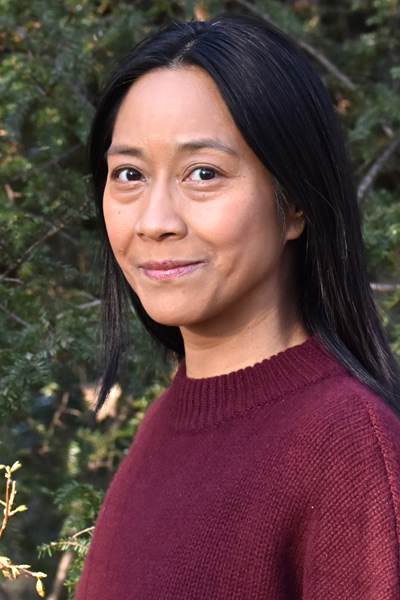
Photo by Vaheed Ramazani
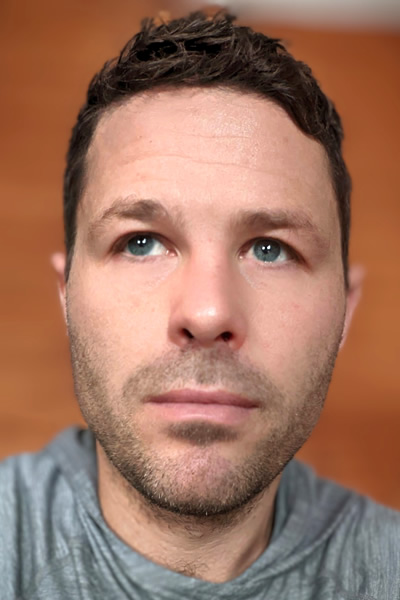
Photo courtesy of Will Vanderhyden
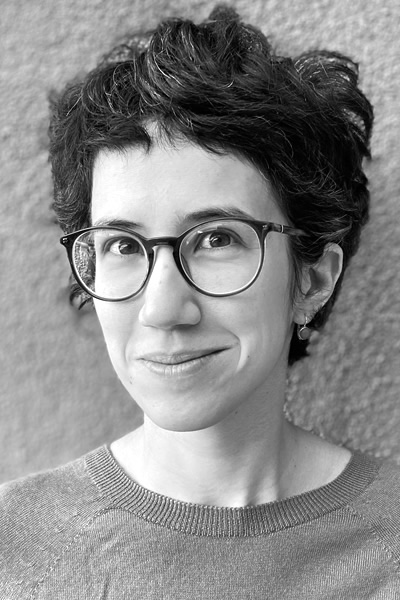
Photo courtesy of Ena Selimović
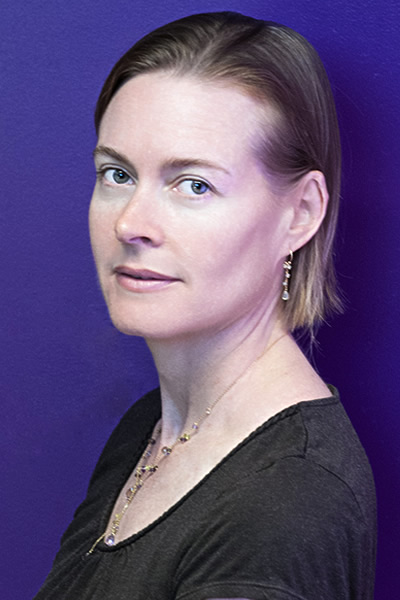
Photo by Anita Staff
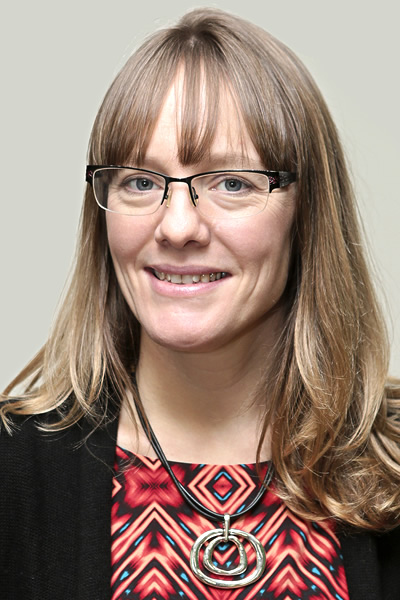
Photo courtesy of Angela Rodel